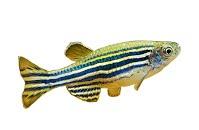Rémy BEAUDOUIN

Ineris - Verneuil-en-Halatte
Parc Technologique ALATA - BP2
60550 Verneuil-en-Halatte
My research aims to develop models and methods for the assessment of ecotoxicological risk. Part of my research is focused on the models developed to take into account the exposure of organisms, while the other two parts present the characterization of the ecotoxicological hazard at biological organization level (population) and temporal scale (genetic adaptation), relevant for management of ecotoxicological risks.
I have developed, calibrated and analyzed simple toxicokinetic models and other physiology-based mechanistic (PBPK) models based on the “dynamic energy budget” theory (DEB / DEBtox model), and individual-based models of the population dynamics (IBM). These various studies were mainly carried out on teleost fish: the gambusia (Gambusia holbrookii), the threespine stickleback (Gasterosteus aculeatus) and the zebrafish (Danio rerio). These models based on mechanisms with many parameters, their analysis and calibration prompted me to take an interest in numerical methods of analysis and calibration of complex models without an analytical solution.
Improve the analysis of ecotoxicological experiment in experimental ecosystems (mesocosms)
Modelling endocrine disruption in fish at different biological levels
Certain chemicals possess the ability of modulating the endocrine systems and are associated with reproductive and developmental dysfunctions, probably related to abnormal levels of circulating steroids hormones. Endocrine disruptor compounds (EDCs) are of great ecotoxicological concern because of their potential harmful effects on humans and wildlife, including fish.

The extrapolation of subtle functional deficits within individuals into population-level effects is a great challenge for the risk assessment of EDCs. Ecological risk assessment should protect the long-term persistence of populations of species in space and time under naturally varying field conditions and in the presence of other stressors (e.g. food limitation). However, excepting the ecotoxicological data provided by mesocosm experiments and a few field studies, data on impacts of chemical substances on populations or higher biological levels are very sparse. In this context, models can play an important role in bridging the gap between what is measured (organism-level endpoints) and what needs to be protected (population-level endpoints).
Among model species for ecotoxicological investigations, zebrafish (Danio reiro) is a vertebrate organism extensively used for scientific purposes and an increasing amount of toxicological data of EDCs toward zebrafish have been gathered during the past years.
Accordingly, the aim of this part of my activities is to propose an integrated modelling framework for zebrafish to assess how EDCs modify the level of hormones in individuals and how such disruption will impact individual fitness and population dynamics. The end goal of this work is to develop quantitative AOP (qAOP) for EDCs.
- David, V., Joachim, S., Porcher, J.M., Beaudouin, R., 2019. Modelling BPA effects on three-spined stickleback population dynamics in mesocosms to improve the understanding of population effects. Science of the Total Environment 692, 854-867.
- Grech, A., Tebby, C., Brochot, C., Bois, F.Y., Bado-Nilles, A., Dorne, J.L., Quignot, N., Beaudouin, R., 2019. Generic physiologically-based toxicokinetic modelling for fish: Integration of environmental factors and species variability. Science of the total environment 651, 516-531.
- Beaudouin, R., Goussen, B., Piccini, B., Augustine, S., Devillers, J., Brion, F., Pery, A.R., 2015. An individual-based model of zebrafish population dynamics accounting for energy dynamics. PLoS One 10, e0125841.
- Beaudouin, R., Dias, V., Bonzom, J.M., Pery, A., 2012. Individual-based model of Chironomus riparius population dynamics over several generations to explore adaptation following exposure to uranium-spiked sediments. Ecotoxicology 21, 1225-1239.
- Beaudouin, R., Monod, G., Ginot, V., 2008. Selecting parameters for calibration via sensitivity analysis: an individual-based model of mosquitofish population dynamics. Ecological Modelling 218, 29-48.

